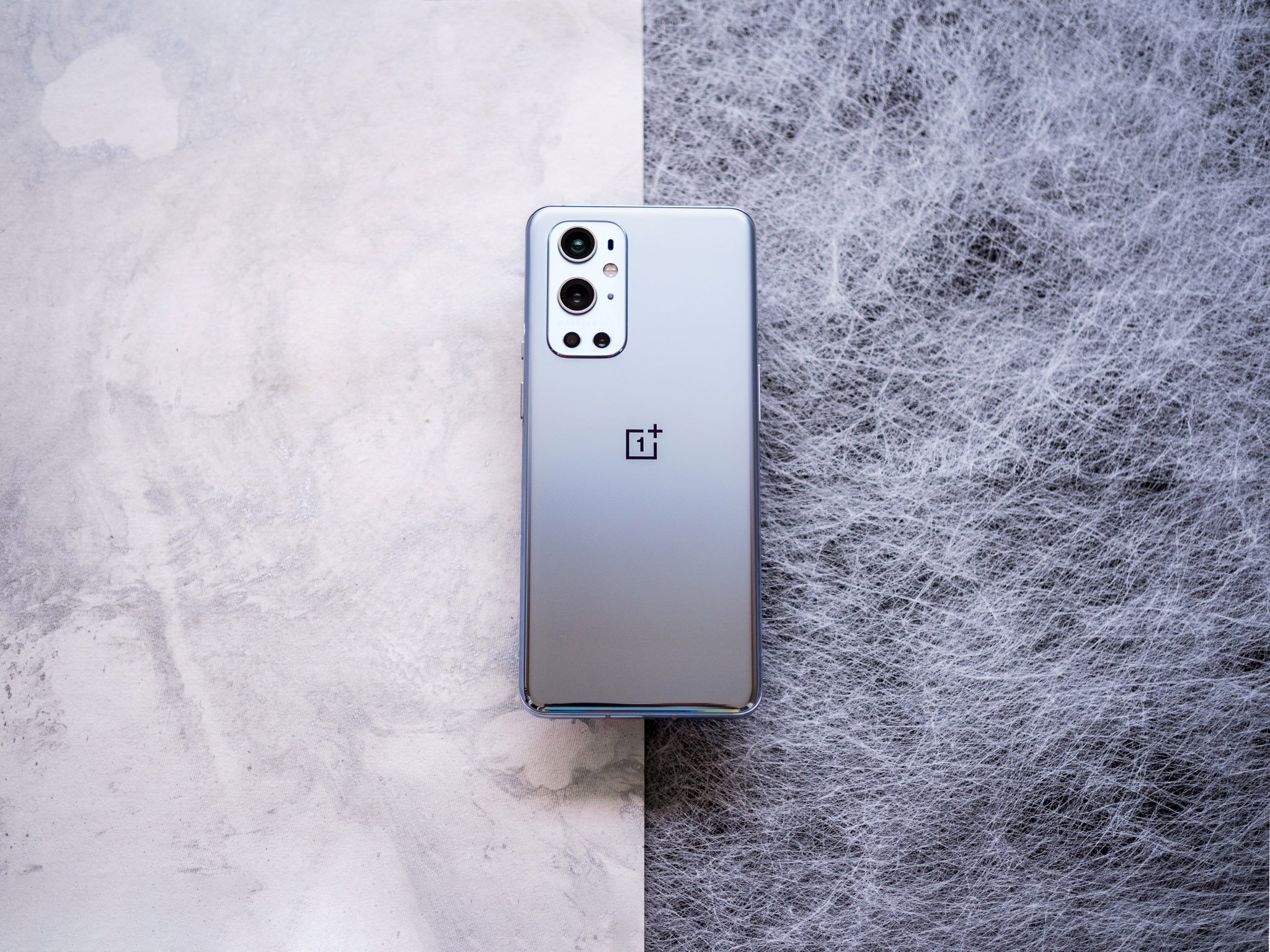Android Central Verdict
The OnePlus 9 Pro gets almost everything right. A smaller, more manageable body, stellar cameras, a big, bright OLED screen, standout performance, and subtle improvements to its design. Subpar battery life and 5G quibbles hold it back, but it wins out in key areas against the 10 Pro.
Pros
- +
Stellar cameras
- +
Gorgeous design
- +
65W wired charging and 50W wireless charging
- +
Outstanding performance
- +
Sublime 120Hz AMOLED display
- +
IP68 dust and water resistance
Cons
- -
Limited 5G connectivity
- -
Software issues remain
Why you can trust Android Central
OnePlus made its foray into the high-end category three years ago with the OnePlus 7 Pro. The device went toe-to-toe with the best that Samsung and Google had to offer, and while OnePlus nailed the hardware side of things, the camera was a letdown.
That was the case with the OnePlus 8 Pro as well. OnePlus made huge strides in key areas, delivering a QHD+ AMOLED display with 120Hz refresh rate, 30W wireless charging, and IP68 dust and water resistance for the first time. But like its predecessor, the 8 Pro just did not measure up to its rivals in terms of the camera side of things.
The OnePlus 8 Pro launched during a period of reorganization for OnePlus. Facing flagging sales, the company turned its focus to the mid-range segment with the introduction of the Nord, and the bet seems to have paid off — OnePlus hit one million phones sales in a quarter for the first time in Q3 2020, and an overwhelming majority of that was down to the Nord.
Alongside an entry into the mid-range and budget segments, OnePlus overhauled its internal staffing with veterans from Samsung and HTC to lead key software initiatives, set up a camera lab to fix long-standing deficiencies, and started offering localized software features in OxygenOS. More recently, it promised to invest $150 million into its camera hardware and establish a long-term relationship with camera maker, Hasselblad. In short, the OnePlus of 2021 is unrecognizable compared to what it was in 2019.
The result of all these efforts is the OnePlus 9 Pro. The phone offers exciting upgrades in just about every area from its predecessor, but what you need to know first and foremost is that the cameras are finally great. A combination of new lenses and a partnership with Hasselblad over color tuning means you get a camera that holds its own against the best that Samsung, Google, Xiaomi, and others have to offer.
Following the launch of the OnePlus 10 Pro, the OnePlus 9 Pro is selling for $799, a discount of $270 over what it launched at in the U.S. Over in India, the phone is retailing at ₹54,199 ($715), making it a good option overall.
With the OnePlus 10 Pro debuting at $899, should you buy OnePlus's 2022 flagship or pick up last year's phone? Let's take a look.
Get the latest news from Android Central, your trusted companion in the world of Android
About this review
This review was jointly written by Harish Jonnalagadda and Daniel Bader over the course of ten days in March 2021, and updated by Harish in June 2021 and April 2022.
Harish's phone was running OxygenOS 11.2.LE15DA out of the box and received a day-one update to 11.2.1.1.LE15DA. He spent his review period on Airtel's network in Hyderabad, India.
Daniel's phone was running OxygenoOS 11.2.LE15AA out of the box and received a day-one update to 11.2.1.1.LE15AA. He spent his review on the TELUS network in Toronto, Canada.
The April 2022 update focuses on the OxygenOS 12 build based on Android 12, and all the software changes that were introduced over the last 12 months.
OnePlus 9 Pro: Price and global availability
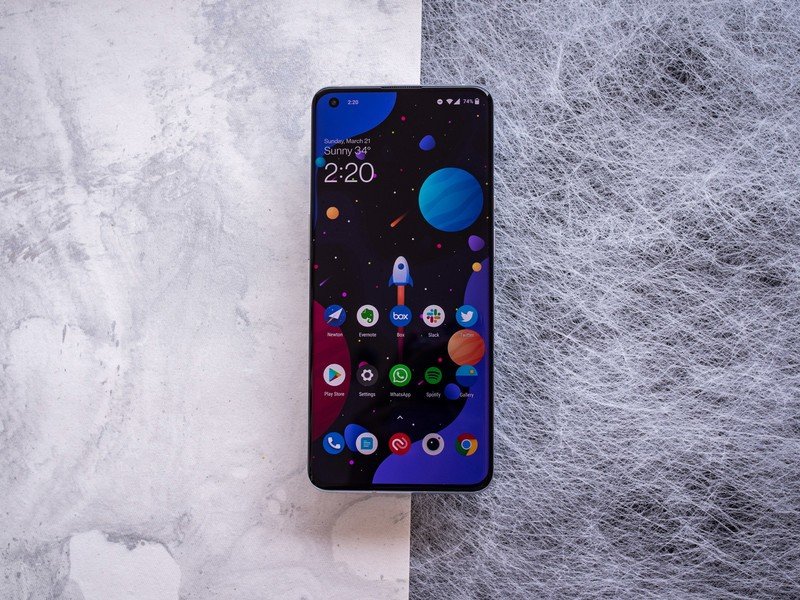
The OnePlus 9 Pro went on sale April 2 in North America, UK, Europe, and India. The base model comes with 8GB of RAM and 128GB of storage, and there's also a 12GB/256GB edition if you need additional storage. That base variant didn't actually launch in North America, with buyers instead limited to the 12GB/256GB option.
Here's the breakdown of OnePlus 9 Pro launch pricing in various parts of the world:
- OnePlus 9 Pro (8GB/128GB): $969 USD / $1,349 CAD / £829 / €899 / ₹64,999
- OnePlus 9 Pro (12GB/256GB): $1,069 USD / $1,499 CAD / £929 / €999 / ₹69,999
And here's what the device costs as of April 2022:
- OnePlus 9 Pro (8GB/128GB): £829 / €899 / ₹54,199
- OnePlus 9 Pro (12GB/256GB): $799 USD / $1,169 CAD / £929 / €999 / ₹59,199
The 9 Pro costs the same in the UK and other countries in the region, but it is selling at a sizeable discount in North America and India. It's $270 off in the U.S., and that is for the 12GB/256GB model. But the phone is at its most affordable in India, where it is just ₹54,199 ($715).
The phone is sold in Morning Mist, Pine Green, and Stellar Black color variants. All three colors are available in India, UK, and EU, but the Stellar Black color option isn't sold in North America.
OnePlus 9 Pro: Design and display

The OnePlus 9 Pro looks like a lot of phones out right now, but it comes together in all the right ways. I think, then, it's more important to compare the phone to OnePlus's previous devices to see how far the company's own approach to design has evolved. There's far more subtlety to the OnePlus line this time around, both in terms of color and stand-out accents or highlights that draw your eye.
OnePlus' design language has evolved, making the 9 Pro looks downright gorgeous.
The phone's front is a dead ringer for the OPPO Find X3 Pro, with its left-oriented camera hole and ever-so-curved edges. The Gorilla Glass 5 meets the aluminum frame at a less severe angle than last year's OnePlus 8 Pro, which cuts down on errant touches on the side of the screen. The phone's buttons are where you'd expect to find them on a OnePlus phone — power button on the right side flanked by the mainstay alert slider which stays just as useful as ever. The left side holds the volume rocker, which is clicky as ever.
Around back, the Morning Mist model shines back at you, a brilliant mirror finish that shifts subtly between silver and black. (The Pine Green and Stellar Black variants have a matte finish instead, with the latter mimicking the feel of the Sandstone finish of the OnePlus One.) Then there's that camera stack that you've likely seen in a million renders by now. Firstly, it's located in the top left of the device, a location we saw utilized to great visual effect on the OnePlus 8T. Two big camera sensors grab the eye, tightly mobbed by a number of smaller sensors that build the best OnePlus camera experience we've seen to date.
The phone is pretty slippery, which makes a case that much more important. The company has fewer first-party options this time around, so you'll want to invest in one of the best OnePlus 9 Pro cases as soon as possible.

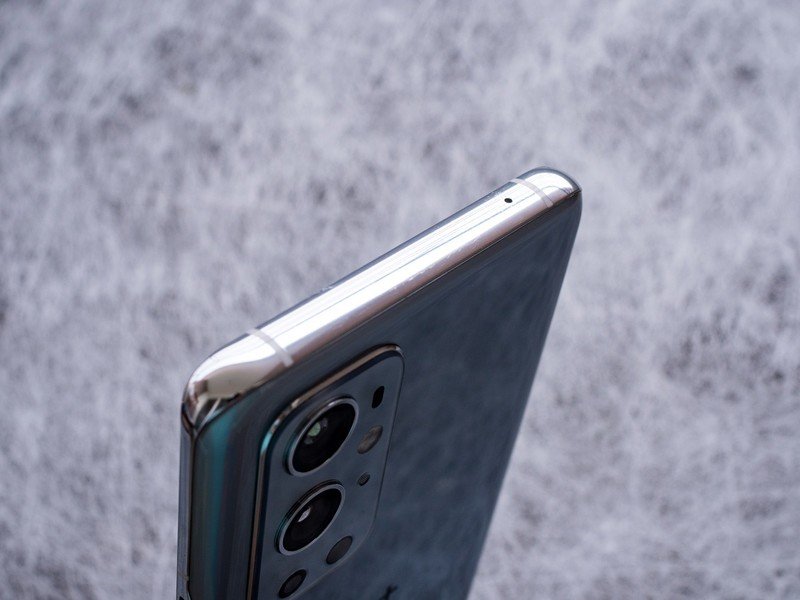
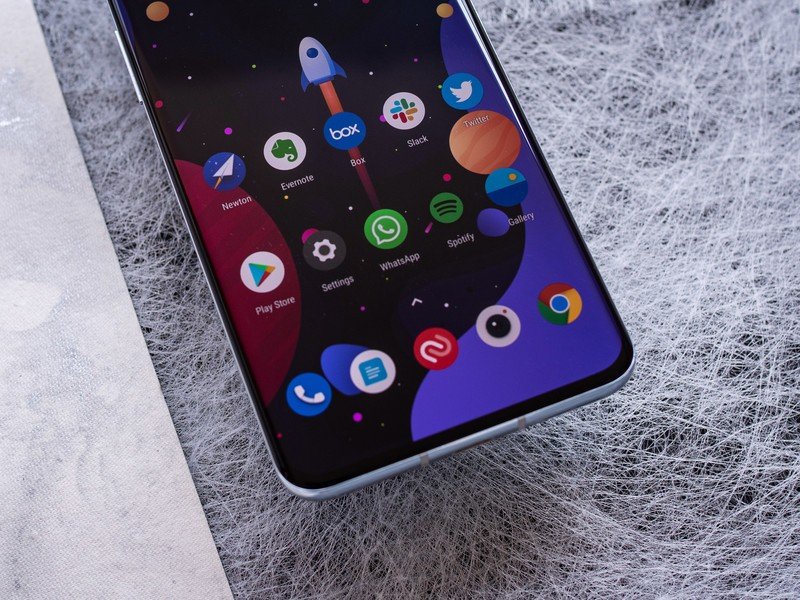
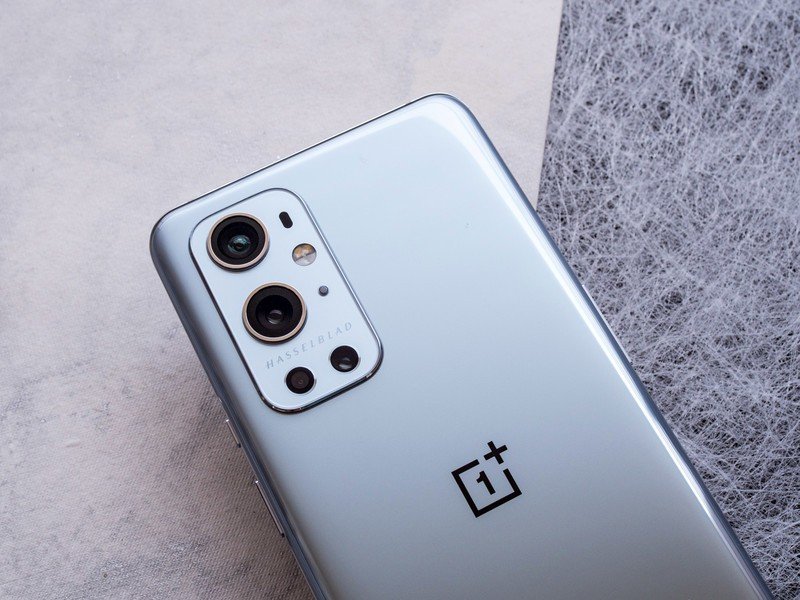
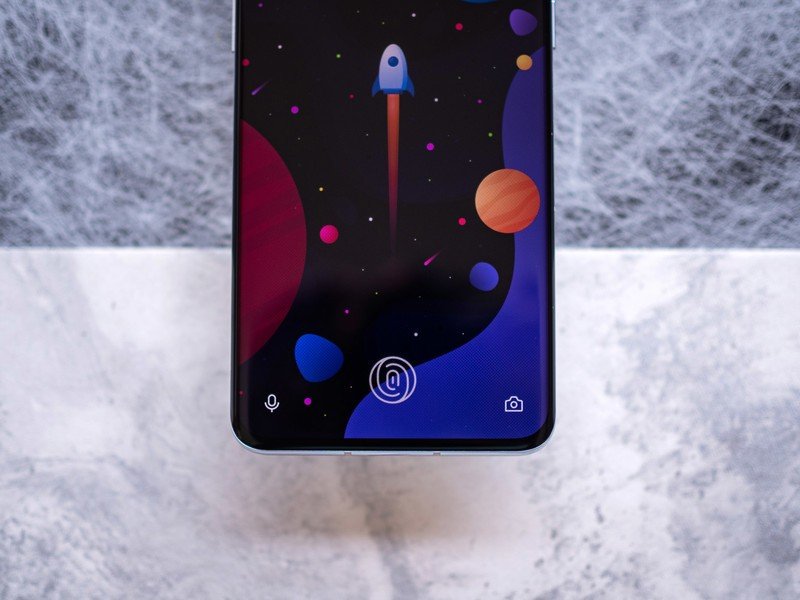
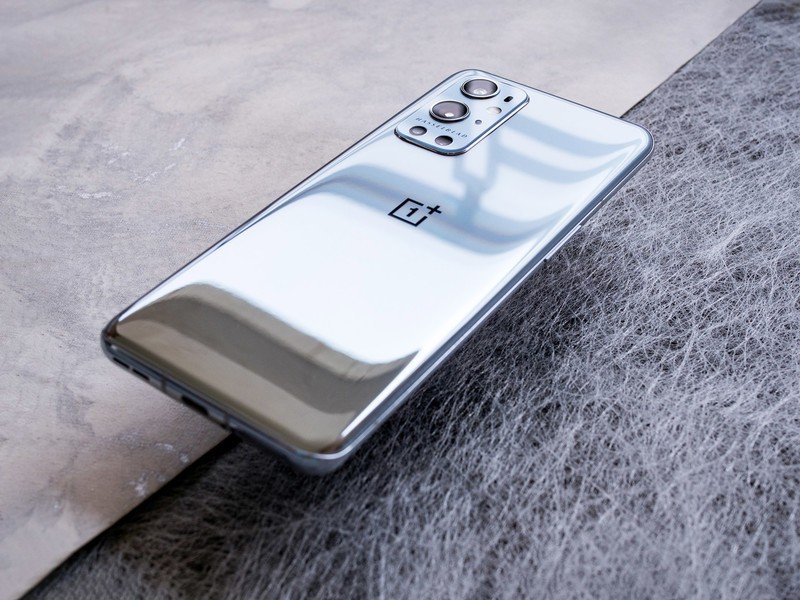
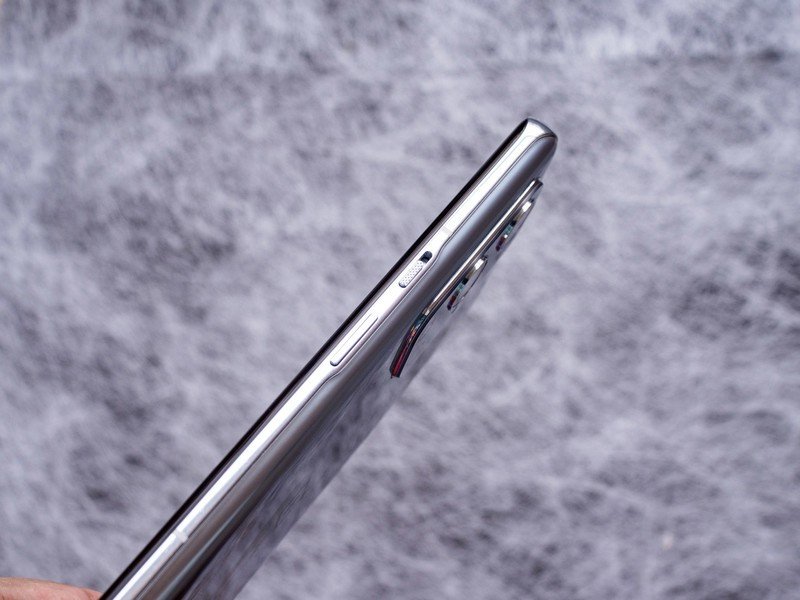


The phone's SIM card slot is located at the bottom next to the USB-C charging port, and while earlier OnePlus phones offered dual-SIM connectivity in all regions, that's changing. The North American version of the 9 Pro has a single-SIM slot, with other global variants getting dual-SIM connectivity. Carriers had a role to play in this particular change in strategy, so if you're incensed that the phone doesn't have dual-SIM in North America, direct your anger toward T-Mobile and Verizon.
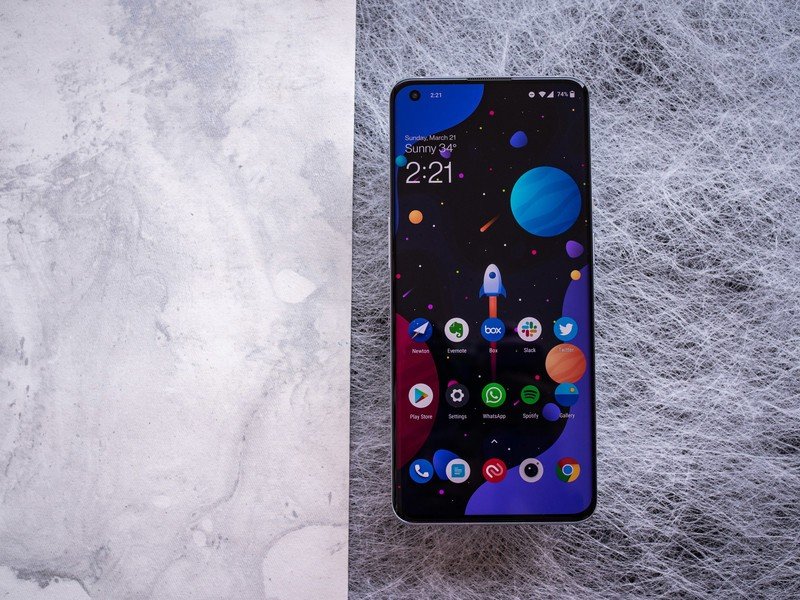
The OnePlus 9 Pro has a 6.7-inch AMOLED display with a QHD+ (3216 x 1440) resolution. OnePlus calls this Fluid Display 2.0, and the standout addition here is the LTPO (low-temperature polycrystalline oxide) tech. The tech allows the 9 Pro to dynamically switch the refresh rate based on the content that's shown on the screen. A key benefit of LTPO? The AOD analog clock now shows a seconds hand, with OnePlus noting this was only possible because of the new tech.
OnePlus isn't the first to roll out a phone with LTPO tech; Samsung introduced it on the Note 20 Ultra, and the S21 Ultra uses the same display tech to dynamically change the refresh rate from 11Hz to 120Hz. But the OnePlus 9 Pro is able to go all the way from 1Hz to 120Hz via the use of a custom controller.
This is one of the best displays you'll find on any phone today.
The display is one of the best you'll find on any phone today, offering excellent contrast levels, high brightness, and great viewing angles. The panel itself is curved like last year, but the curvature itself isn't as extreme, and as the chassis is marginally thicker, it isn't anywhere as unwieldy to use.
The 9 Pro continues to hold its own against the 10 Pro in this regard, with the 2022 flagship retaining the same panel.
You also get stereo sound here, and the earpiece doubles up as the secondary speaker. The sound output isn't as rich as devices that have identical speakers in a true stereo configuration — like the Xiaomi Mi 11 — but it does make a difference when streaming videos or playing games.
On that note, OnePlus has an interesting new feature called Hyper Touch that increases touchscreen polling to 360Hz — it's usually 240Hz — to decrease input lag. The feature is limited to a select few games like Call of Duty Mobile, League of Legends, PUBG Mobile, and Brawl Stars for now, with more set to be added later.
Unfortunately, the actual touch experience with the OnePlus 9 Pro isn't always consistent. I (Daniel Bader) and a number of my peers in the industry have experienced edge detection issues while typing on the default Gboard keyboard, specifically when quickly tapping the ?123 button at the bottom left corner to activate the secondary keys. OnePlus has acknowledged the issue, but none of the updates since launch have fixed the problem.
OnePlus finally introduced always-on display (AOD) last year with OxygenOS 11, and the feature itself offers plenty of customization. OnePlus partnered with the Parsons School of Design over the Insight AOD, and it gives you a visual overview of time spent using the phone and number of unlocks over the course of the day.
There's also Canvas AOD that lets you add your own photos and turn them into a silhouette.
OnePlus 9 Pro: Hardware & performance

OnePlus' core tenet is delivering the best possible performance, and that hasn't changed. The OnePlus 9 Pro is powered by Qualcomm's 5nm Snapdragon 888, and it comes with 8GB of LPDDR5 RAM and 128GB of UFS 3.1 storage as standard.
| Specs | OnePlus 9 Pro |
|---|---|
| Software | OxygenOS 11, Android 11 |
| Display | 6.7" (3216x1440) 120Hz AMOLED |
| Chipset | 2.84GHz Snapdragon 888 |
| RAM | 8GB/12GB LPDDR5 |
| Storage | 128GB/256GB UFS 3.1 |
| Rear Camera 1 | 48MP IMX789 ƒ/1.8 (primary) |
| Rear Camera 2 | 50MP IMX766 ƒ/2.2 (wide-angle) |
| Rear Camera 3 | 8MP ƒ/2.4 (telephoto) |
| Rear Camera 4 | 2MP (monochrome) |
| Front Camera | 16MP IMX471 ƒ/2.4 |
| Connectivity | Wi-Fi 6, BT 5.2, NFC, AptX HD |
| Battery | 4500mAh | 65W, 50W wireless |
| Security | In-screen fingerprint |
| Colors | Morning Mist, Forest Green, Stellar Black |
| Dimensions | 163.2 x 73.6 x 8.7mm |
| Weight | 197g |
The Snapdragon 888 is a known quantity at this point, and the chipset delivers exciting performance gains over the Snapdragon 865. That's down to the new Cortex X1 core that goes up to 2.84GHz, and the chipset also has three Cortex A78 derivatives clocked at 2.42GHz, and four Cortex A55 cores at 1.80GHz.
The Adreno 660 GPU delivers up to 35% better performance in gaming over the Adreno 650. The result is that the OnePlus 9 Pro is an absolute delight to use for everything from scrolling through social media, browsing, and playing the best Android games. The phone handled everything I threw at it without breaking a sweat, and I didn't see any lag or slowdowns whatsoever. This is not a device that will slow down even after a few years' worth of use.
And coming back to it in April 2022, that holds true. The device continues to be one of the fastest phones in the market.
While the Qualcomm chipset in and of itself delivers massive gains, OnePlus is offering a few features to improve the thermal performance of the device. OnePlus Cool Play is a new addition that shifts the heat dissipation from the metal mid-frame to the glass front and back.
The reasoning is that you're likely to hold the mid-frame with your fingers when you're playing a game, so by siphoning the heat from the glass, the frame itself doesn't get too hot. The device also features a five-layer graphite sheet and a large vapor chamber for sustained gaming performance.
While that sounds great in theory, the OnePlus 9 Pro overheated when I was setting up the phone, and it got to a point where I wasn't able to launch the camera and the chipset automatically throttled to control the heat. The last time I ran into this particular issue was on a Sony Xperia Z five years ago, and while I didn't encounter overheating during the ten-day review window, it has often been the case over the last three months. This phone likes to overheat — particularly during gaming.
One feature that OnePlus absolutely nailed this generation is the haptic engine. The vibration motor on the OnePlus 9 Pro is one of the best I've used on any phone, and it delivers granular feedback for gesture navigation and keyboard strikes. Like the OnePlus 8 Pro, the 9 Pro offers IP68 dust and water resistance. While the regular OnePlus 9 misses out on an official IP rating, OnePlus has revealed that the standard version is also waterproof — it just hasn't been certified. (The T-Mobile variant is IP68 certified, though, and will likely cost a bit more as a result.)
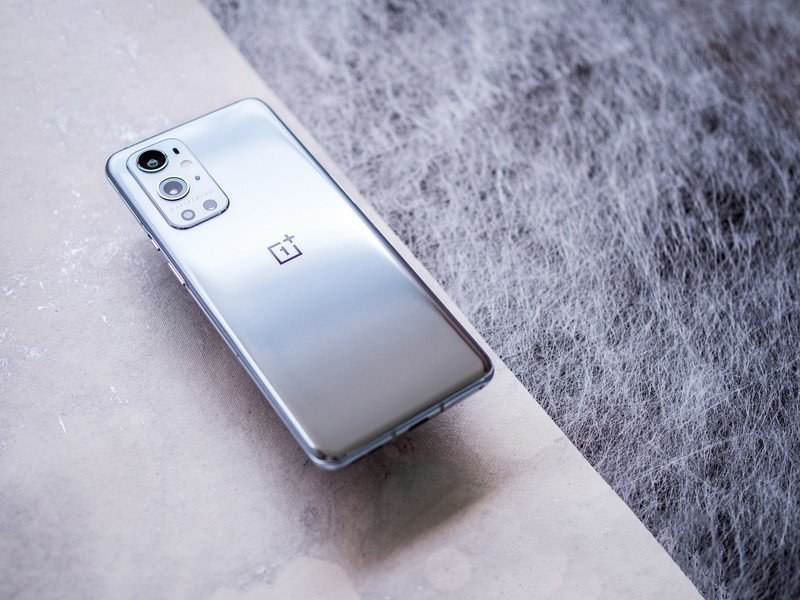
As for connectivity, the OnePlus 9 Pro has Wi-Fi 6, Bluetooth 5.2, NFC, and the AptX HD and LDAC audio codecs. I didn't face any issues with Wi-Fi connectivity; the phone consistently delivered bandwidth of 500Mbit over Wi-Fi 6, and there were no issues with Bluetooth either. Like previous years, some variants come with dual-SIM connectivity as standard, though not the U.S. variants, and the device has Wi-Fi calling as well as VoLTE, with availability varying by carrier and region.
The main issue I have with the phone in terms of the hardware is the location of the fingerprint sensor. The optical module is fast to authenticate and reliable in daily use, but it sits far too low on the screen, making it awkward to access. I mostly relied on the software-based face unlock for authentication, and while it isn't as secure as the fingerprint sensor, it is incredibly fast.
The OnePlus 9 Pro has the requisite 5G bands for all U.S. carriers, but you'll only be able to use it on T-Mobile and Verizon.
Another quibble is around 5G connectivity. The OnePlus 9 Pro has Sub-6 and mmWave 5G connectivity in North America, making the device eligible for 5G on T-Mobile, AT&T, and Verizon. It has N1, 2, 3, 7, 25, 28, 41, 66, 71, 78 bands for Sub-6 and N258, 260, 261 over mmWave, but inexplicably, OnePlus is limiting 5G connectivity to two of the three major carriers.
The OnePlus 9 Pro will not work on AT&T's 5G network even though it has the requisite 5G bands. The phone will be available in both unlocked versions and a T-Mobile carrier edition, but even if you buy the unlocked model, you can only access 5G connectivity on T-Mobile and Verizon, which certified the phone on March 27. MVNOs that use T-Mobile 5G seem to work fine, however — the OnePlus 9 Pro works with Google Fi and delivers 5G connectivity.
This arbitrary limitation for AT&T makes the 9 Pro a difficult sell in the U.S., and I don't understand why OnePlus decided to intentionally hamper the usability of its latest flagship. While the 9 Pro has mmWave bands, the current OnePlus 9 variants only offer Sub-6 5G, so for that particular phone to work on Verizon's mmWave 5G network, OnePlus will have to offer a new SKU — just like it did with the OnePlus 8 UW.
And things haven't changed in 2022; the 10 Pro doesn't work with AT&T's 5G network either, so this is a conscious decision by OnePlus to limit its devices to T-Mobile and Verizon.
In Canada, where Sub-6 5G is proliferating, the OnePlus 9 Pro won't detect the burgeoning technology at all; it's not even in the firmware even though the hardware supports it. Other versions of the OnePlus 9 Pro are limited to Sub-6 5G connectivity, with the European model getting bands N1, 3, 5, 7, 8, 20, 28, 38, 40, 41, 66, 77, 78, and the Indian version getting just two: N41, 78. The Indian unit has 5G connectivity in name only, and with mainstream 5G service not slated to kick off for a few years, this is a moot point for now.
OnePlus 9 Pro, OnePlus 9 & OnePlus 9R Specifications

In addition to the OnePlus 9 and 9 Pro, there's a third device dubbed the OnePlus 9R that's exclusive to India and China.
The OnePlus 9R is an interesting option in the OnePlus 9 series; it has a 6.5-inch 120Hz LCD display and features the same 48MP Sony IMX586 camera as the OnePlus Nord along with a 16MP wide-angle lens, and it has the same 4500mAh battery as the rest of the OnePlus 9 models with 65W wired charging.
The phone has a polymer mid-frame, and it misses out on the Hasselblad branding, likely to save costs. Most of the hardware is identical to the last year's OnePlus 8, and the phone is available in India for ₹39,999 ($550) for the 8GB/128GB version, ₹5,000 ($70) less than the starting variant of the OnePlus 9.
Here's the full details on the OnePlus 9 series:
| Header Cell - Column 0 | OnePlus 9 | OnePlus 9 Pro | OnePlus 9R |
|---|---|---|---|
| Operating system | Android 12, OxygenOS 12 | Android 12, OxygenOS 12 | Android 12, OxygenOS 12 |
| Display | 6.5-inch 120Hz AMOLED 2400x1080 (20:9) Gorilla Glass 5 | 6.7-inch 120Hz LTPO AMOLED 3216x1440 (20.1:9) Dual curved screen Gorilla Glass 5 | 6.5-inch 120Hz Fluid Display 2400x1080 (20:9) Gorilla Glass 5 |
| Chipset | Snapdragon 888 1 x 2.84GHz Cortex X1 3 x 2.42GHz Cortex A78 4 x 1.80GHz Cortex A55 5nm | Snapdragon 888 1 x 2.84GHz Cortex X1 3 x 2.42GHz Cortex A78 4 x 1.80GHz Cortex A55 5nm | Snapdragon 870 1 x 2.84GHz Cortex A77 3 x 2.42GHz Cortex A77 4 x 1.80GHz Cortex A55 7nm |
| GPU | Adreno 660 | Adreno 660 | Adreno 650 |
| RAM | 8GB/12GB LPDDR5 | 8GB/12GB LPDDR5 | 8GB/12GB LPDDR4X |
| Storage | 128GB/256GB UFS3.1 | 128GB/256GB UFS3.1 | 128GB/256GB UFS3.1 |
| MicroSD slot | ❌ | ❌ | ❌ |
| Rear camera 1 | 48MP Sony IMX689 f/1.8, 1.12um, EIS 8K at 30fps, 4K at 60fps Hasselblad Camera for Mobile | 48MP Sony IMX789 f/1.8, 1.12um, OIS, EIS 8K at 30fps, 4K at 120fps Hasselblad Camera for Mobile | 48MP Sony IMX586 f/1.7, 0.8um, OIS, EIS 4K at 60fps Hasselblad Camera for Mobile |
| Rear camera 2 | 50MP Sony IMX766 (wide-angle) f/2.2, freeform lens 4K at 60fps | 50MP Sony IMX766 (wide-angle) f/2.2, freeform lens 4K at 60fps | 16MP (wide-angle) f/2.2, 123-degree field of view |
| Rear camera 3 | 2MP monochrome camera | 8MP telephoto f/2.4, 1.0um 3x optical zoom | 5MP macro lens |
| Rear camera 4 | ❌ | 2MP monochrome camera | 2MP monochrome |
| Front camera | 16MP Sony IMX471 f/2.4, 1.0um, EIS Fixed focus | 16MP Sony IMX471 f/2.4, 1.0um, EIS Fixed focus | 16MP Sony IMX471 f/2.4, 1.0um, EIS Fixed focus |
| Connectivity | Wi-Fi 6, Bluetooth 5.2 NFC, AptX HD, A-GPS | Wi-Fi 6, Bluetooth 5.2 NFC, AptX HD, A-GPS | Wi-Fi 6, Bluetooth 5.1 NFC, AptX HD, A-GPS |
| 5G (North America) | Sub-6: N1, 2, 3, 5, 7, 8, 20, 25, 28, 38, 40, 41, 48, 66, 71, 77, 78 | Sub-6: N1, 2, 3, 5, 7, 8, 25, 28, 38, 40, 41, 48, 66, 71, 77, 78 mmWave: N258, 260, 261 | ❌ |
| 5G (Europe) | Sub-6: N1, 3, 5, 7, 8, 20, 28, 38, 40, 41, 66, 78 | Sub-6: N1, 3, 5, 6, 8, 20, 28, 38, 40, 41, 66, 77, 78 | ❌ |
| 5G (India) | Sub-6: N41, 78 | Sub-6: N41, 78 | Sub-6: N78 |
| Battery | 4500mAh (2 x 2250mAh), USB-C 3.1 65W Warp Charge 65T (10V/6.5A) 15W Qi wireless charging (North America/Europe) | 4500mAh (2 x 2250mAh), USB-C 3.1 65W Warp Charge 65T (10V/6.5A) 50W Warp Charge 50 Wireless (In: 10V/6.5A, 20V/3.25A; Out: 50W max) | 4500mAh (2 x 2250mAh), USB-C 3.1 65W Warp Charge 65 (10V/6.5A) |
| Audio | USB-C Stereo speaker | USB-C Stereo speaker | USB-C Stereo speaker |
| Security | In-display fingerprint (optical) | In-display fingerprint (optical) | In-display fingerprint (optical) |
| Dimensions | 160 x 74.2 x 8.7mm (North America/Europe) 160 x 73.9 x 8.1mm (India/China) | 163.2 x 73.6 x 8.7mm | 161 x 74.1 x 8.4mm |
| Weight | 192g (North America/Europe) 183g (India/China) | 197g | 180g |
| Colors | Winter Mist, Arctic Sky, Astral Black | Morning Mist, Pine Green, Stellar Black | Lake Blue, Carbon Black |
OnePlus 9 Pro: Battery life

The OnePlus 9 Pro retains the same 4500mAh battery as the OnePlus 8T, and it uses the 65W fast charging standard as well. The phone has a dual-cell system with two 2250mAh batteries, and the 65W charge is directed into two 32.5W streams to simultaneously charge both cells.
The best part about OnePlus' fast charging tech is that the phone itself doesn't get hot. The charging circuitry is offloaded to the charger, and that ensures the device doesn't overheat even with a 65W charge. The charger itself works over the USB-PD standard at up to 45W, so you can use it for charging other phones or accessories. Conversely, you can use other chargers to top up the OnePlus 9 Pro, but the speed will be limited to 18W.
It takes just 29 minutes to fully charge the OnePlus 9 Pro — and 43 minutes wirelessly.
For this generation, OnePlus is making a few tweaks to deliver charge even faster. The phone has 12 sensors to manage heat and control voltages on the fly, and as a result, it can now charge from zero to 75% in just 20 minutes, and a full charge takes just 29 minutes — a full 10 minutes less than the OnePlus 8T. Because of the changes, the charging tech is now called Warp Charge 65T.
Another exciting addition is 50W wireless charging. OnePlus introduced 30W wireless charging in 2020, and the tech is being upgraded to 50W. Thankfully, there's no integrated cable this time; the wireless charger doesn't even have a bundled cable, and you'll need to use the OnePlus 9 Pro's Warp Charge 65 wall plug or any 65W USB PD charger to power it up — it needs 10V/6.5A or 20V/3.25A.

The wireless charger takes just 43 minutes to fully charge the battery on the 9 Pro, but it has a built-in fan and tends to get pretty loud. There is a bedtime mode option if you prefer leaving the phone on the charger overnight; in this mode, the wireless charger trickle charges the device and the fan is turned down. You can pick up the OnePlus wireless charger for $70, and it charges regularly over the Qi protocol at 15W.
Battery life was strictly average at launch, but software updates fixed the issues — the device now lasts all day.
It's good that the phone charges up quickly, because you will be reaching for the charger a lot. Even though the LTPO display is designed to improve battery efficiency, that doesn't necessarily translate in day-to-day use. The OnePlus 9 Pro has strictly average battery life with the 120Hz option enabled, and if you also switch to QHD+ resolution, you'll struggle to get a day's worth of use.
With the resolution set to QHD+ and 120Hz refresh rate enabled, I averaged 3.5 to four hours of screen-on-time over the course of a day. I had AOD enabled throughout, and by the end of the day (around 11pm), battery routinely fell below 20%. The one day I went out and switched to 4G data for six hours or so, I had to plug in before the end of the day.
Battery life is not nearly as good as the OnePlus 8 Pro, 8T, or most flagships released in 2021 — I consistently got better figures with the Xiaomi Mi 11. Idle drain is also unnaturally high. When left overnight from 12am to 7am with AOD disabled, battery level fell by 8% on average, which is three times as high as other phones I've used this year.
Of course, you can extend battery life by turning down the resolution to FHD+, but that defeats the idea of having a phone with a QHD+ display.
Thankfully, this particular issue was fixed with software updates rolled out later in 2021, and with the OxygenOS 12 release, the 9 Pro manages to last a full day without any issues.
OnePlus 9 Pro: Cameras

While the OnePlus 9 Pro has a bold new design and exciting hardware changes, the biggest upgrade centers around the cameras. The phone features a brand new 48MP f/1.8 Sony IMX789 sensor with larger 1.12-micron pixels and OIS. There's now a 50MP f/2.2 wide-angle lens with a Sony IMX766, an 8MP f/2.4 telephoto lens with 3x optical zoom, and a 2MP monochrome module. Up front, you'll find a 16MP fixed-focus Sony IMX471 camera that has been unchanged for the last two years.
With the OnePlus 8 Pro and 8T, it was clear that OnePlus just didn't have the camera tuning chops to go up against Samsung, Google, Xiaomi, OPPO, and other flagship manufacturers. That's where Hasselblad comes in; OnePlus invested $150 million in a three-year deal that will involve both companies collaborating on cameras to take on the best Android phones, so this is not a one-off partnership.
Hasselblad's color tuning and upgraded sensors have created one of the best cameras you'll find today.
For the OnePlus 9 series, Hasselblad provided guidance on color tuning for all imaging modules, shooting modes, and lighting scenarios. While the effort thus far has focused on software, OnePlus has mentioned that the partnership will involve a hardware component as well in the coming years.
The result is a new Hasselblad Camera for Mobile that is the default camera app on the OnePlus 9 and 9 Pro. You'll find an orange shutter button for all the photo modes — an homage to Hasselblad — and there's a new "Shot on OnePlus x Hasselblad" watermark that you can enable in the settings. You can also enable a leaf shutter sound that mimics the sound of Hasselblad cameras.
The camera interface itself has picked up a few tweaks, with orange accent colors scattered throughout, but the basics are still the same: you'll find all the shooting modes laid out in a ribbon at the bottom, and there are toggles for the timer, flash, macro mode, full-res 48MP mode, beautify effects, and settings.
OnePlus is also offering enticing gains with video recording. The OnePlus 9 Pro can shoot 4K video at up to 120fps, and there's the ability to shoot 8K footage at 30fps — a first for the company.



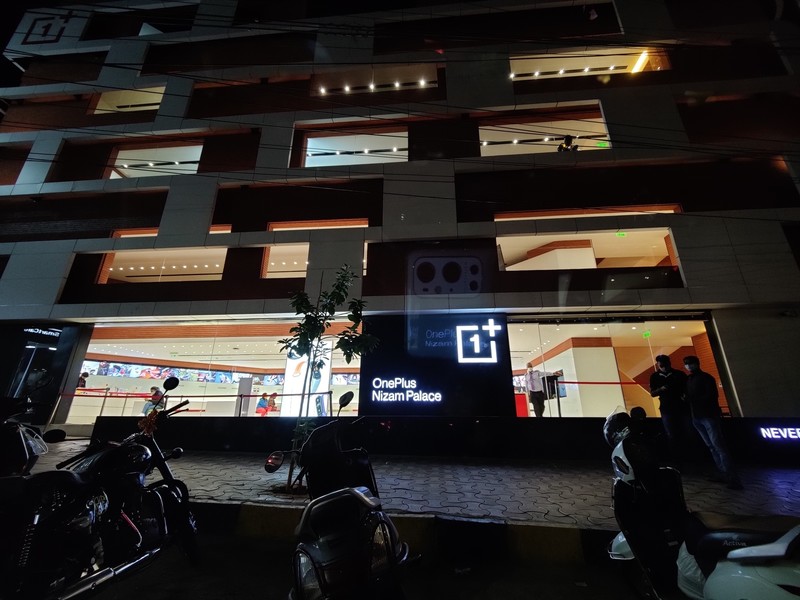
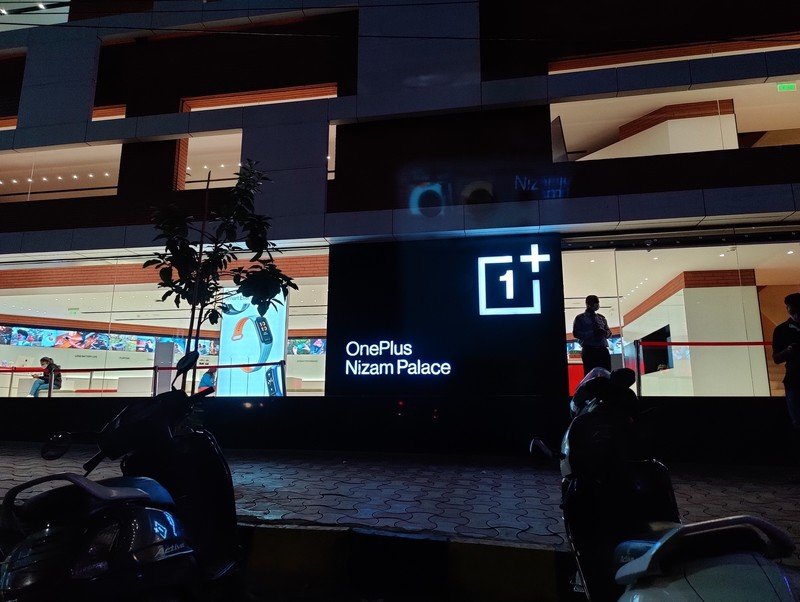
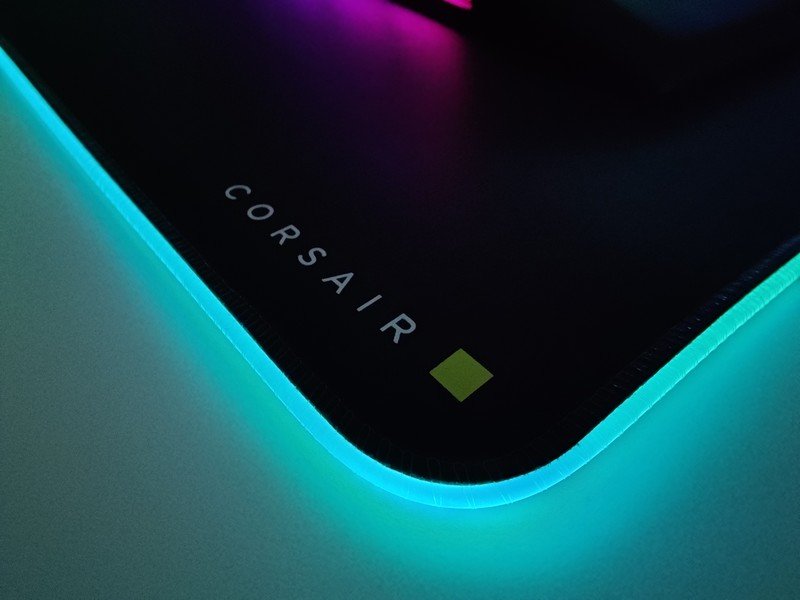
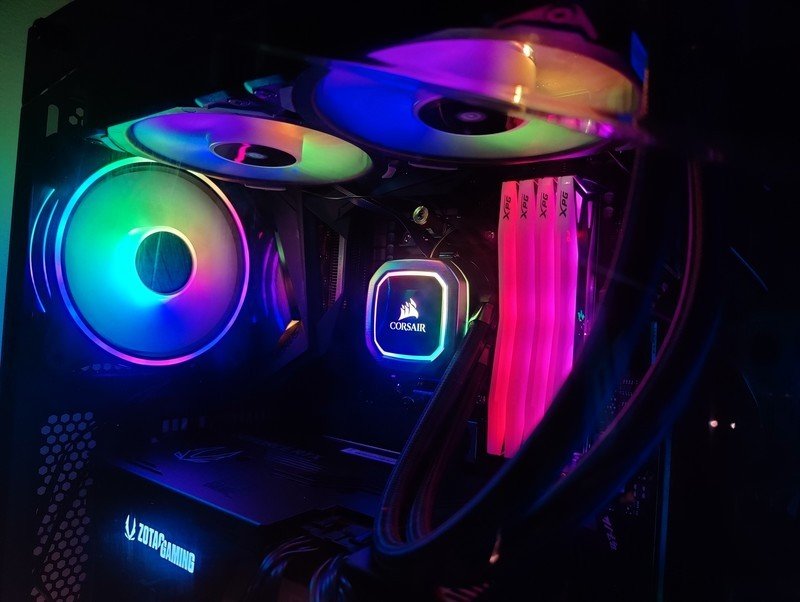

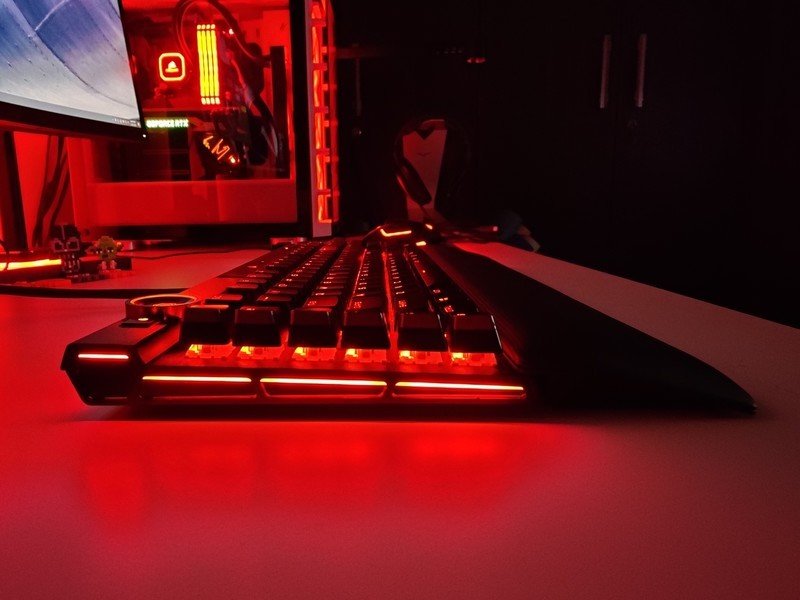
Thanks to the upgraded imaging modules and Hasselblad color tuning, the OnePlus 9 Pro takes significantly better photos than its predecessors. Shots in daylight conditions are on par with the best phones available today; you get excellent dynamic range and accurate colors. The 2MP monochrome lens serves as a hardware filter, with the photos taken by the main 48MP camera itself.
The OnePlus 9 Pro particularly shines in low-light conditions, and this is where Hasselblad's color science has paid real dividends. Photos taken in low-light have plenty of detail, saturated colors, and minimal noise levels. The hallmark of a great camera is that you can take great photos in any lighting condition effortlessly, and the OnePlus 9 Pro finally delivers on this promise.

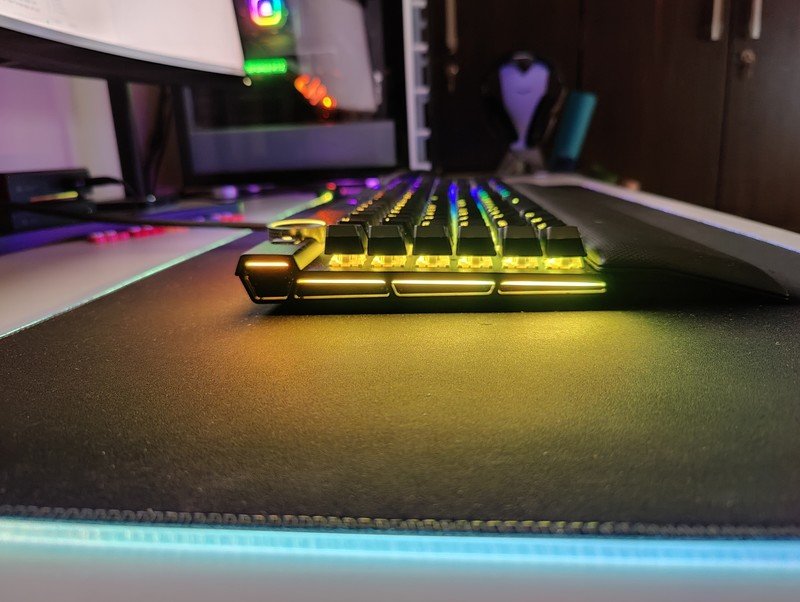
The device manages to latch on to a subject and take usable shots even in very demanding shooting scenarios. Some photos taken in very limited or no lighting tend to be noisy around the edges, and you can easily fix this with the dedicated Nightscape mode. In this mode, the phone takes a series of photos at various exposure levels and stitches them together, creating a brighter image with low noise levels.



The 50MP wide-angle lens on the OnePlus 9 Pro is the best you'll find on any phone today. The lens takes the same caliber of photos as the primary 48MP camera, and the resultant shots don't have any barrel distortion. You can use the dedicated night mode with the wide-angle lens as well, and it can shoot 4K video at up to 60fps.
In fact, the 10 Pro doesn't have a wide-angle lens as good as the 9 Pro, and this is an area where the 2021 device comes out clearly in the lead.
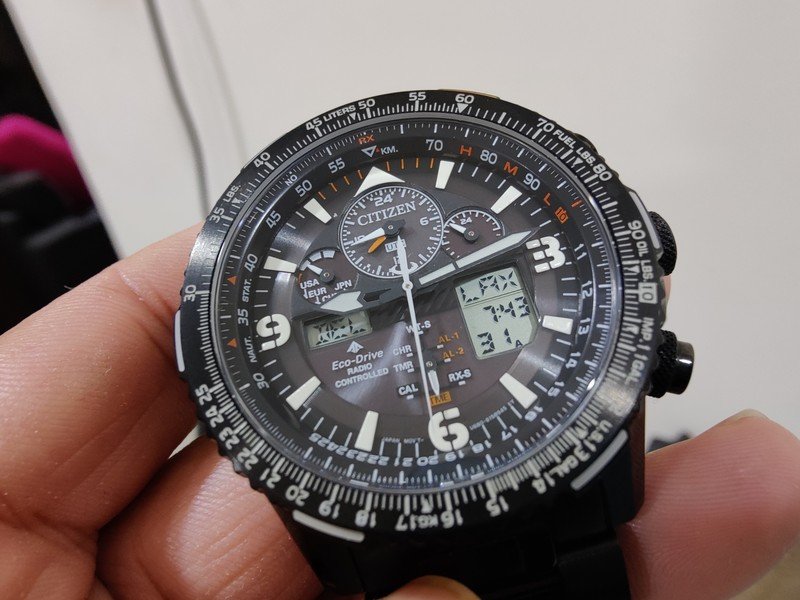

The wide-angle lens also doubles up as a macro shooter, and unlike dedicated 5MP macro lenses that have become the norm, you actually get detailed shots with the OnePlus 9 Pro. Finally, the phone has a Pro mode that lets you shoot up to 12-bit RAW, and you get the usual set of controls to manually adjust ISO, white balance, exposure, focus, and more.
As for the 8MP telephoto lens, the module itself is identical to last year, and it does a decent enough job at up a zoom factor of 3x; go beyond that and you immediately start seeing artifacts. While the 16MP front camera uses the same lens as the last few generations, Hasselblad's color tuning has made a real difference here as well, and you get decent selfies in just about any lighting condition.
Overall, the OnePlus 9 Pro has a camera that holds its own against the Galaxy S21 Ultra, Xiaomi Mi 11 Ultra, and other Android flagships. The Hasselblad collaboration has solved this particular issue for OnePlus, and a year after its launch, the 9 Pro continues to be a solid option.
Given that the OnePlus 10 Pro has a lackluster wide-angle lens, you're better off choosing the 9 Pro instead. The hardware fundamentals are largely unchanged between the two devices, and you get much more versatile cameras with the 9 Pro.
OnePlus 9 Pro: Software
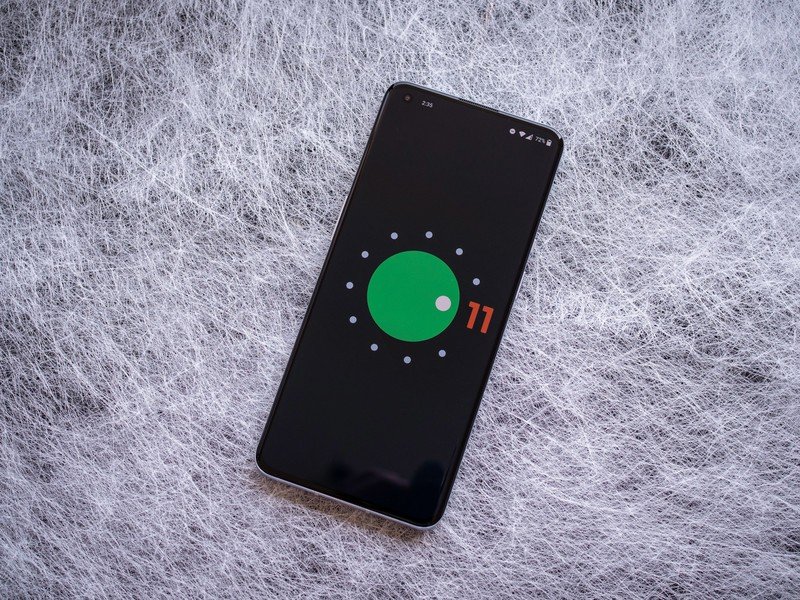
The software experience continues to be a big part of why OnePlus stands out from its rivals. The company's focus on a clean interface without any bloatware set the bar for third-party skins, but with OxygenOS 11, OnePlus switched to a design language that was inspired by Samsung's One UI.
That said, the changes aren't very obtrusive, and the interface itself is just as fluid as before. OnePlus has done an incredible job optimizing OxygenOS for 120Hz displays; animations feel smooth and there's no lag or jitter anywhere. That said, there are a few software quirks: memory optimization continues to be aggressive on OxygenOS, and I had to manually disable the feature for apps like Slack and Newton Mail to get notifications.
OxygenOS 12 continues to be divisive, but things are changing.
The core of OxygenOS is still intact: customizability. You get a wide variety of customization options, including AOD styles, accent colors, system icons — as well as selecting a third-party icon pack — fonts, and animations for the in-screen fingerprint reader. There's also a Horizon light feature that's similar to Edge lighting on Galaxy phones — the feature lights up the sides of the screen for incoming notifications, and is meant to be an alternative to the legacy LED notification light.
Other features include dynamic backgrounds, schedulable dark mode, updates to Zen Mode, and all the additions Google baked into Android 11: Conversations view, one-time permissions, persistent media player in the settings tiles, and smart home controls in the power menu.
OnePlus switched to Google's phone dialer and Android Messages as the default dialer and texting clients in 2020, and that is the case on the OnePlus 9 Pro as well. The software doesn't have much in the way of bloatware — the Facebook debacle is still fresh in users' mind — and the few OnePlus apps and services that are installed out of the box can be easily removed.
OnePlus took a controversial decision to merge OxygenOS with ColorOS in June 2021, and the result is that OxygenOS 12 is just a rehashed version of ColorOS 12 with a few exclusive features.
That obviously got the OnePlus userbase riled up as the software is the biggest differentiator for the manufacturer, and making wholesale changes like this means OxygenOS 12 isn't as good as earlier builds of the interface.
That led to a laundry list of problems; the OxygenOS 12 beta build started rolling out at the end of 2021, but they were so bug-ridden that it wasn't until February 2022 that a stable version was available for the device.
Even after rolling back updates that were marked stable and delaying the rollout to fix bugs, the software situation with the 9 Pro is demonstrably worse than when the phone launched in 2021.
OnePlus's goal in 2022 is to undo the mistakes with OxygenOS, and it has confirmed that it will go back to its roots with OxygenOS 13, once again delivering a clean and lightweight UI without any extraneous design.
That's slated to release with Android 13, and we'll have to wait and see if the brand can deliver in this area.
OnePlus uses India as the testbed for introducing new software features in OxygenOS, and one of those is Red Cable Club, a loyalty program that offers rewards and gift vouchers to OnePlus owners.
You can log into Red Cable Club while setting up the phone, but you'll still see a push notification prompting you to sign in once you head to the home screen for the first time. Starting at the end of 2021, Red Cable Club started becoming available globally.
There's also a new feature called Nearby Charging Stations. OnePlus has installed fast-charging stations at a few airports in India and said it will do so at upcoming launch events and pop-up stores, and these stations use beacons to detect nearby OnePlus phones — if you have the feature enabled.
The Nearby Charging Stations toggle is located in the battery sub-menu in the settings, and the feature essentially uses your location in the background and notifies you once your phone is near a charging station.
OnePlus' fledgling attempts at new features haven't borne fruit yet.
You will see constant prompts to enable Nearby Charging Stations within OxygenOS, and we don't really understand why this feature exists. Sure, it is a good idea to set up charging stations at thoroughfare points like airports and launch events, but you can easily spot them; you don't need to enable a feature that polls your location data at all times to do so. There's also the fact that the launch of this feature in the middle of a pandemic seems ill-advised at best.
Nearby Charging Stations isn't the only OnePlus feature that's bothersome. The default pull-down gesture within OxygenOS doesn't give you the notification pane, but instead directs you to the OnePlus Shelf, which includes all your widgets and shortcuts. So you'll have to head into the home screen settings to change the default behavior.
We figured these features would go away with the move to OxygenOS 12, but that isn't the case. Thankfully though, you can just disable the services without too much of a hassle.
OnePlus 9 Pro: The competition

The OnePlus 9 Pro comes out at an interesting time. Like my colleague Jerry Hildenbrand says, this is the company's opportunity to dip into the mainstream after years of languishing in the margins.
While the company launched its first carrier model with T-Mobile, the OnePlus 6T, back in 2018, it's struggled to capture the attention of the phone-buying public more comfortable with brands like Galaxy and iPhone. While it doesn't hurt that the 9 Pro is its best phone ever, and supported by T-Mobile again, it's going up against a Samsung lineup that's also never been stronger.
This is particularly true in 2022. The Galaxy S22 Ultra is a phenomenal phone that ticks all the right boxes, and it is the best flagship money can buy today. And if you don't want all the extras, the Galaxy S22+ is the best overall phone for most users — it has amazing cameras, a sublime 120Hz AMOLED screen, great software, and all-day battery life with fast wired charging.
Unlike OnePlus, Samsung is making all the right moves on the software side of things. Its 2022 flagships will get four guaranteed Android OS updates and five years of security updates, making it the de facto leader in this area.
Then there's the Realme GT 2 Pro. The device isn't coming to North America, but it is a solid alternative to the 9 Pro in global markets. It has a lot of the same hardware as the 10 Pro, including a QHD+ AMOLED screen and the latest internals, and you get a large battery with 65W charging, great cameras, and clean software with useful features.
If you're not sure of the direction OnePlus is taking with its software, Realme is the ideal alternative in 2022.
Finally, the OnePlus 9 is a fantastic product that delivers in every way over its own mediocre predecessor. While its cameras and display don't come close to reaching the quality of the 9 Pro, it's a fully-equipped flagship this time around — especially with wireless charging on board. When it comes to the OnePlus 9 vs. OnePlus 9 Pro, it all comes down to whether you want to invest in the additional camera prowess that more expensive phone brings.
OnePlus 9 Pro: Should you buy it?
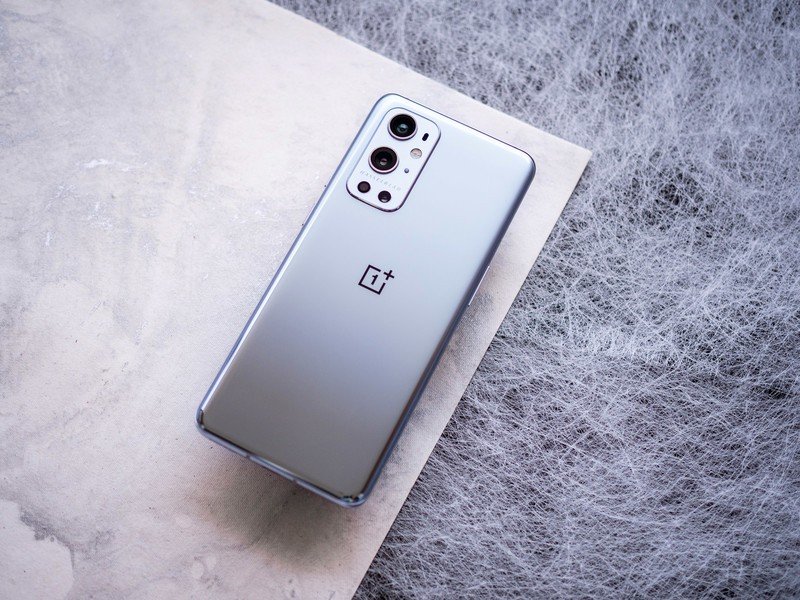
You should buy this if ...
You want a OnePlus phone with flagship cameras
The OnePlus 9 Pro finally delivers what OnePlus fans have been asking for several years: a camera that is as good as the best phones available today. The partnership with Hasselblad has paid off for the brand, and the 48MP camera takes truly outstanding photos in any lighting scenario. The 50MP lens is also the best wide-angle shooter you'll find on a phone, and it is much better than just about any phone in 2022.
You want uncompromising performance
OnePlus knows a thing or two about offering performance-oriented phones, and that's no different with the 9 Pro. With Qualcomm's latest Snapdragon 888 chipset under the hood, you won't see any slowdowns for at least a few years, even with the most demanding of games. The phone also has 65W wired and 50W wireless charging, and the latter in particular is a standout addition.
You should not buy this if ...
You want reliable software
OnePlus's software decisions haven't made much sense over the last 12 months, and the result is that OxygenOS 12 isn't as good in day-to-day use. The interface is still customizable, but it lacks cohesion, and it's missing the same look and feel that made OnePlus devices stand out.
This is changing with OxygenOS 13, but if you'd rather not wait, you should consider Samsung or Realme.
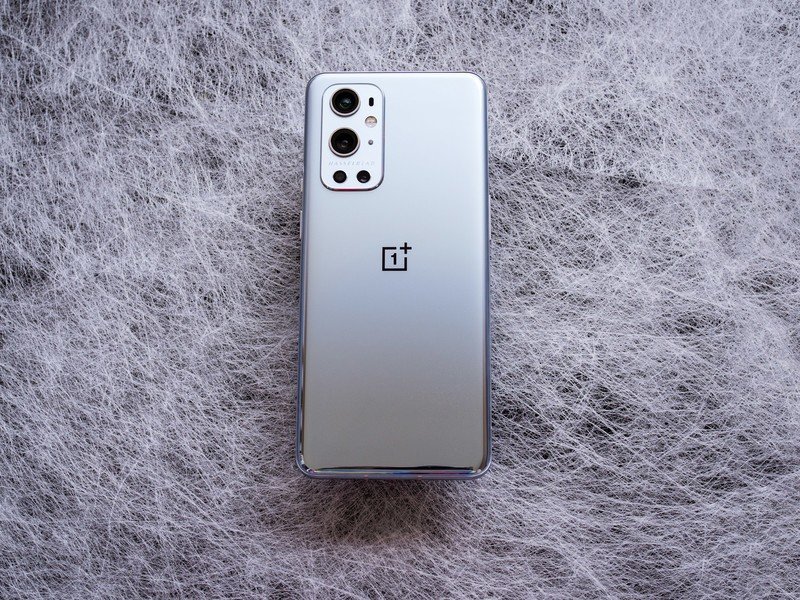
With the OnePlus 9 Pro debuting at $969, OnePlus needed to nail everything. Thankfully, it did that. The Hasselblad collaboration has led to vastly improved cameras, with the 9 Pro outmatching the best that Samsung offered in 2021. That alone is a significant achievement when you look at how the OnePlus 8 Pro fared.
But what makes the OnePlus 9 Pro truly great is the overall experience. The 120Hz AMOLED display with LTPO tech is one of the best displays on any phone today, the Snapdragon 888 unlocks a new level of performance, and you get all-day battery with fast charging. I've used other Snapdragon 888-powered phones with 120Hz panels, but somehow the OnePlus 9 Pro just feels that much more fluid.
Like any phone today, there are downsides. There's the 5G conundrum in the U.S. — although the phone has the requisite 5G bands for all carriers, it is limited to T-Mobile and Verizon. And the software situation isn't ideal.
Finally, with the 9 Pro now down to $799 and ₹54,199, it is a fantastic deal when positioned against the 10 Pro. OnePlus didn't make too many changes to the hardware with its 2022 flagship, and the cameras are worse. Sure, the phone will get one more platform version as it is launching with Android 12, but if you want to maximize value and need a great wide-angle camera, you should buy the OnePlus 9 Pro in 2022.
Overall, OnePlus nailed the fundamentals. The 9 Pro is lighter and more compact than the OnePlus 8 Pro and at the same time delivering improved performance, superior cameras, and a better design. And that screen is very good. It's not quite perfect, but it's as close to OnePlus has come so far, and that's a pretty significant milestone.

The OnePlus 9 Pro continues to be a solid overall choice in 2022. You get a gorgeous design, powerful hardware, great cameras, and all-day battery life with fast charging.

Harish Jonnalagadda is Android Central's Senior Editor overseeing mobile coverage. In his current role, he leads the site's coverage of Chinese phone brands, networking products, and AV gear. He has been testing phones for over a decade, and has extensive experience in mobile hardware and the global semiconductor industry. Contact him on Twitter at @chunkynerd.
